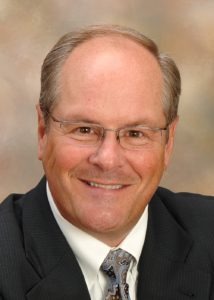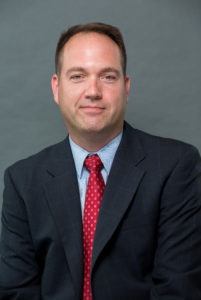Combatting Ageism in Your Facility

Kirsten Jacobs, director of dementia and wellness education, LeadingAge
Generally speaking, America has an age problem. As a culture, we tend to revere youth and beauty and discount age and experience. This sets the stage for rampant ageism, and senior care facilities are not immune to the negative effects.
Ageism is defined as “discrimination and stereotypes based on age,” says Kirsten Jacobs, director of dementia and wellness education with LeadingAge, a membership organization representing the field of aging services.
Ageism runs both ways
Although ageism is often directed at older adults — think a dismissive phrase like “OK, Boomer” — ageism can also be directed at younger people. Consider the many articles that have disparaged the abilities and contributions of members of the Millennial generation, for example. So by definition, “ageism refers to the experience of discrimination based on age,” Jacobs explains.
In senior care facilities, ageism can be quite prevalent, even though it’s not always obvious. “In settings where older adults live, there’s also a staff that represents a huge age range,” Jacobs says. And this inter-generational mix can sometimes prompt unkind comments or subtle discrimination.
But it’s not just about staff being ageist towards residents. Sometimes residents hold ageist views about each other or discriminate against their younger caregivers. “Internalized ageism is everywhere,” Jacobs says.
“Often our provider members will say older adults show so much internalizing of ageism. They say things like ‘I don’t want to be around old people,’” and other things that show that these individuals are discriminating against their peers, Jacobs says. “Older adults have had the most time to be steeped in this ageist culture,” so it makes sense that they may express such views. But it’s still ageism, and it can still be harmful.
Policies can institutionalize ageism
Sometimes, ageism is institutionalized in policy. “It shows up in advocacy and policies that value safety over autonomy and assume diminished capacity” is always a consequence of age, Jacobs says.
Not every older adult has Alzheimer’s or cognitive decline. Many are perfectly capable of tending to basic needs. But in an attempt to support them, some facilities go overboard and wind up infantilizing older adults and creating an environment where they’re being discriminated against because of their numerical age.
And this can all translate into fewer resources being available for older adults. “Less than 3% of philanthropic dollars go towards older adults and their needs,” she says.
Ageism’s detrimental (and measurable) effects on health and wellness
Ageism isn’t just not nice, it can have calculable detrimental impacts on health and wellness. A February 2020 study conducted by Becca Levy, professor of epidemiology (social and behavioral sciences) at the Yale School of Public Health and Professor of Psychology at Yale University, found that ageism amplified the cost and prevalence of health conditions. In the study, Levy was able to put an actual price tag on that cost.
“The 1-year cost of ageism was $63 billion, or one of every seven dollars spent” on eight of the 10 most expensive health conditions among American adults aged 60 and older. “Ageism resulted in 17.04 million cases of these health conditions,” including cardiovascular disease, chronic respiratory disease, musculoskeletal disorders, injuries, diabetes mellitus, treatment of smoking, mental disorders, and non-communicable diseases.
Combatting ageism should be part of your approach to keeping residents healthier and lowering costs.
3 Tips for Combatting Ageism in Your Facility
“It’s safe to assume that ageism shows up everywhere,” Jacobs says. And the first step towards eradicating ageism is to raise awareness of what it is and how it may show up in interpersonal interactions. “We always encourage consciousness of the problem. If awareness is piqued, it’s easier to actively disrupt it,” Jacobs says.
So, take a hard look at your facility. Does your facility have an ageist atmosphere? Are your residents being discriminated against? If so, it can have a real impact on their quality of life, and it’s important that you take steps to address this issue.
Here are some suggestions for reducing ageism in your senior care facility:
- Look at your policies. Take a look at your policies and make an honest assessment of whether you’re discriminating against your residents in any way. Are you lumping all of your seniors in with your memory care residents in terms of how policies are written or in reducing their independent agency? Are there ways you can alter policies to permit your residents to be more in charge of their own days and activities? Safety is important, but you also need to respect your residents’ need for independence as much as possible.
- Assess how staff interact with residents. Do your staff use terms like “dear,” “honey,” or “sweetie,” when addressing residents? If someone forgets something, do they refer to it as “having a senior moment?” Talk to your employees about how these subtle instances of ageism can have a much bigger impact than they probably intend. Doctors sometimes do it, too. “If the doctor addresses the adult child instead of the patient directly,” this is ageism, Jacobs says. Talk to your staff members about avoiding these sorts of ageist interactions and recalibrating their language and approach to working with older adults.
- Offer training and education. Consider offering training sessions that raise awareness of the issue and help create a more supportive and inclusive environment at your facility. The Gerontological Society of America offers an online, multi-module course called Ageism First Aid designed to change the common negative misconceptions and myths about aging by replacing them with facts that should be common knowledge. It’s an inexpensive course (costing $20-$30 depending on membership status) that can be used by virtually anyone in your facility who needs to be trained on ageism and its prevention.

Elaine K. Howley is a freelance journalist for various publications. An award-winning writer specializing in health, fitness, sports and history, her work has appeared in numerous print and online publications, including U.S. News, AARP.org, espnW, SWIMMER magazine and Atlas Obscura. She’s also a world-record holding marathon swimmer with a passion for animals and beer. Contact her via her website: elainekhowley.com.
Related Articles
Topics: Administration , Departments , Facility management , Featured Articles , Leadership , Policy










